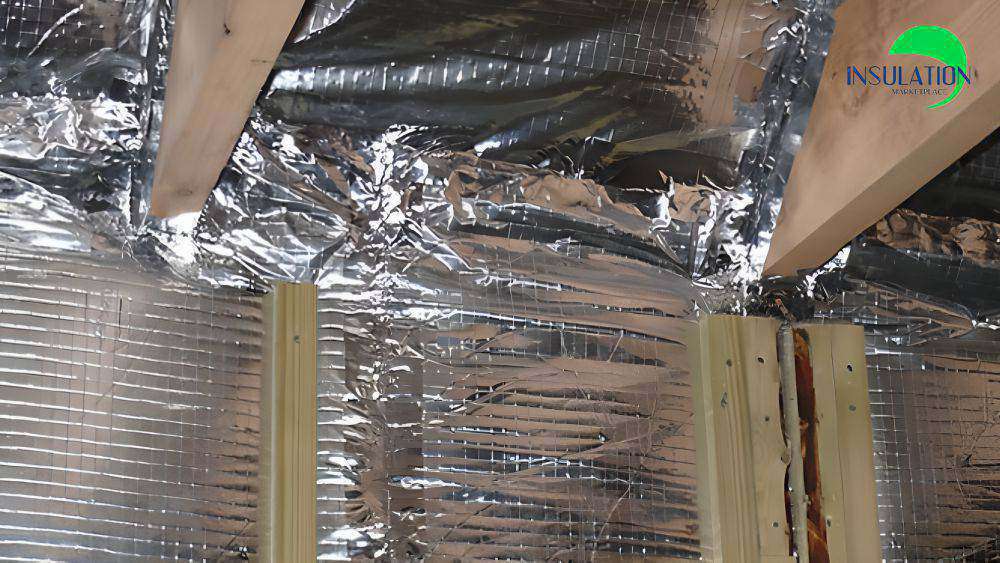How to Insulate a Crawl Space for Better Home Comfort
Transforming your home starts from the ground up, including the often-overlooked space beneath your feet. Crawl spaces, though hidden, are important for your home’s health. With the right steps, you can turn this space into a barrier against drafts, moisture, and high energy bills.
Discover how to insulate a crawl space to create a more comfortable, cost-effective, and durable home environment for years with our helpful blog below.
What is Crawl Space?
A crawl space is a small area under your home. It is below the foundation and close to the ground. The space is usually less than three feet high. We can access the house's plumbing, electrical systems, and structural parts through a crawl space. This space is too small for regular use but good for housing utilities.
Crawl spaces have two main types:
- Vented Crawl Spaces: These have vents that allow air to flow through. This can cause temperature changes and energy loss.
- Unvented Crawl Spaces: These are closed off from outside air. They offer improved insulation and moisture control, enhancing overall comfort and protection.
Crawl spaces are common in areas with uneven ground or high humidity where basements can't be built. The insulation choice depends on the size, condition, and type of crawl space. Flood-prone areas need extra moisture control to avoid damage.
.jpg)
How to Insulate a Crawl Space
Why You Need to Insulate a Crawl Space
Learning how to insulate a crawl space ceiling offers key benefits for your home’s comfort and efficiency.
1. Energy Savings
It helps keep warm air during winter and cool air in summer, reducing air conditioner expenses.
2. Moisture Protection
Insulation reduces moisture buildup. It helps prevent mold, mildew, and water damage to your home’s foundation.
3. Improved Air Quality
A well-insulated crawl space blocks allergens, pollutants, and radon to enhance quality of air.
4. Enhanced Comfort
It stabilizes temperatures and eliminates cold floors. Your home will feel more comfortable year-round.
5. Structural Protection
Insulation protects wood beams and floor joists from moisture damage. This prevents sagging floors and structural issues.
6. Increased Property Value
An insulated crawl space boosts your home’s energy efficiency and long-term durability.
Why Reflective Insulation is Ideal for Crawl Spaces
Reflective insulation stands out as the best choice for insulating crawl spaces, particularly in regions with warm climates. Here’s why:
- Heat Deflection: Reflective insulation actively reflects radiant heat, rather than absorbing it, keeping your crawl space and home cooler.
- Moisture Resistance: It doesn’t absorb water, making it ideal for humid or flood-prone areas.
- Durability: Reflective insulation resists wear and tear, ensuring long-lasting performance.
- Lightweight and Flexible: Easy to install, even in the tight confines of a crawl space.
One popular option is our SmartSHIELD Reflective Insulation. It controls moisture, prevents heat loss, and improves energy efficiency. Its lightweight design makes installation easy, even in tight spaces.

Why Reflective Insulation is Ideal for Crawl Spaces
How to Insulate a Crawl Space: Step-by-step Guide
Follow these steps to insulate your crawl space effectively:
Preparing the Crawl Space
- Clear the Area: Remove debris, dirt, and old insulation.
- Check for Moisture: Fix leaks or drainage problems.
- Seal Cracks and Vents: Use spray foam or caulk to close gaps and stop air leaks.
- Inspect for Pests: Handle any infestations before starting how to insulate a crawl space with a dirt floor.
Installing Insulation
- Choose Materials: Pick insulation that suits your crawl space and climate.
- Install on Walls and Floors: Install rigid foam panels or fiberglass batts on the walls. A vapor barrier should be placed on the ground.
- Secure Insulation: Use adhesives or fasteners to keep insulation in place.
Sealing and Finishing
- Seal Edges: Use tape or caulk to ensure a tight seal around the insulation.
- Inspect Work: Make sure all areas are covered and secured.
- Monitor for Moisture: Check regularly to detect moisture or damage.
By following these steps, you can ensure the process of how to insulate a crawl space under house is both effective and durable. Proper sealing and finishing are as important as choosing the right materials.

Insulate a Crawl Space
How to Insulate Other Crawl Spaces
Different crawl spaces need specific insulation methods:
An Unvented Crawl Space
Seal vents and use spray foam or rigid foam panels for walls and floors. Add a vapor barrier to control moisture. This setup ensures complete insulation and reduces the risk of mold and mildew.
A Crawl Space With Concrete Walls
Apply rigid foam directly to the walls and cover with a vapor barrier. This setup prevents heat transfer and reduces humidity. For added protection, you can use a dehumidifier to keep moisture levels in check.
Get the Best Insulation for Your Crawl Space
Learn how to insulate a crawl space to protect your home’s foundation, while also making a long-term investment. Proper insulation brings comfort, lowers utility costs, and improves indoor air quality.
Whether you want to boost your home’s performance or avoid costly repairs, insulating this area makes a real difference. Simple steps now can lead to big benefits later.
For high-quality insulation, visit Insulation MarketPlace. We offer reliable materials for all crawl space needs. Explore our selection now and take the first step toward a more energy-efficient home.




